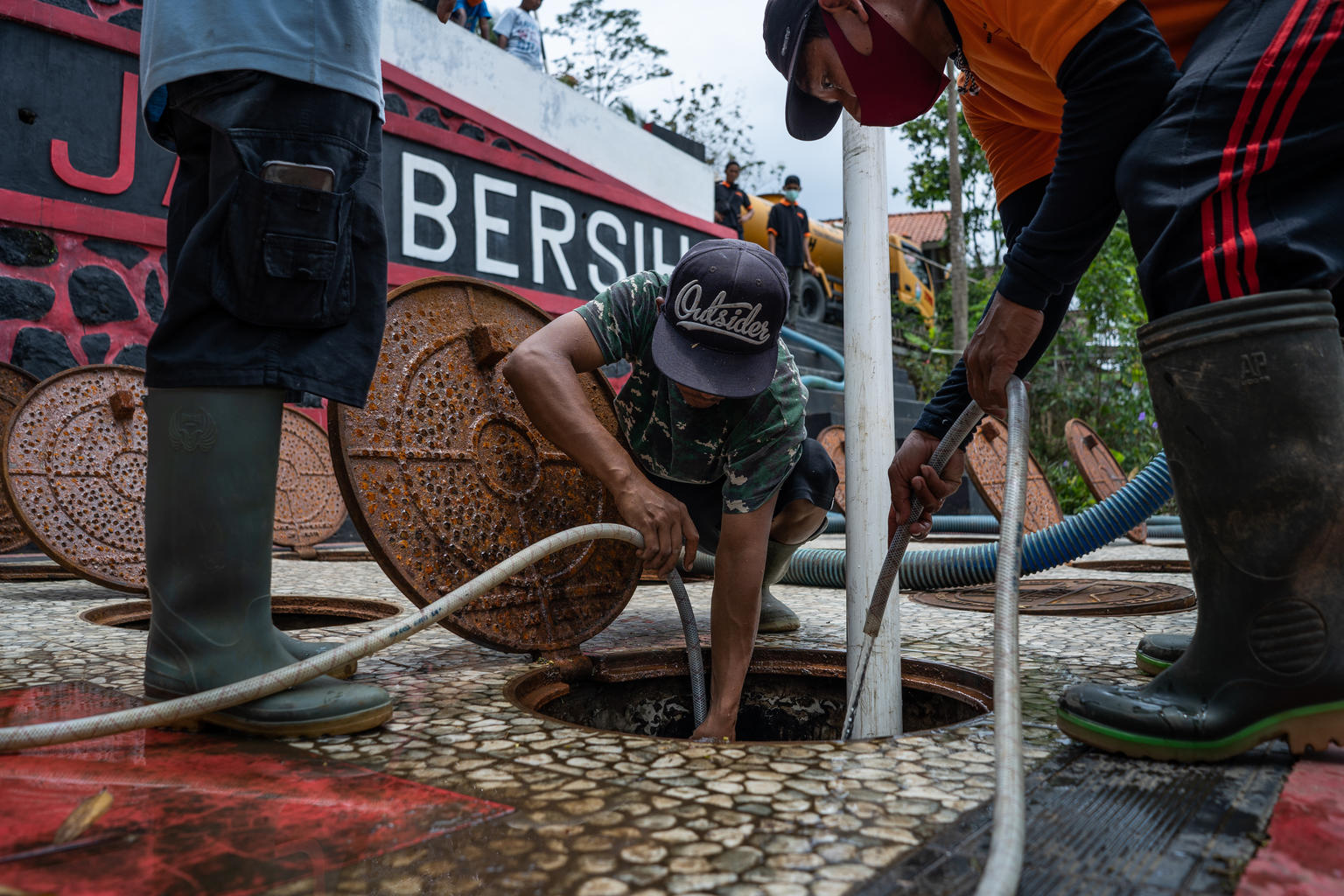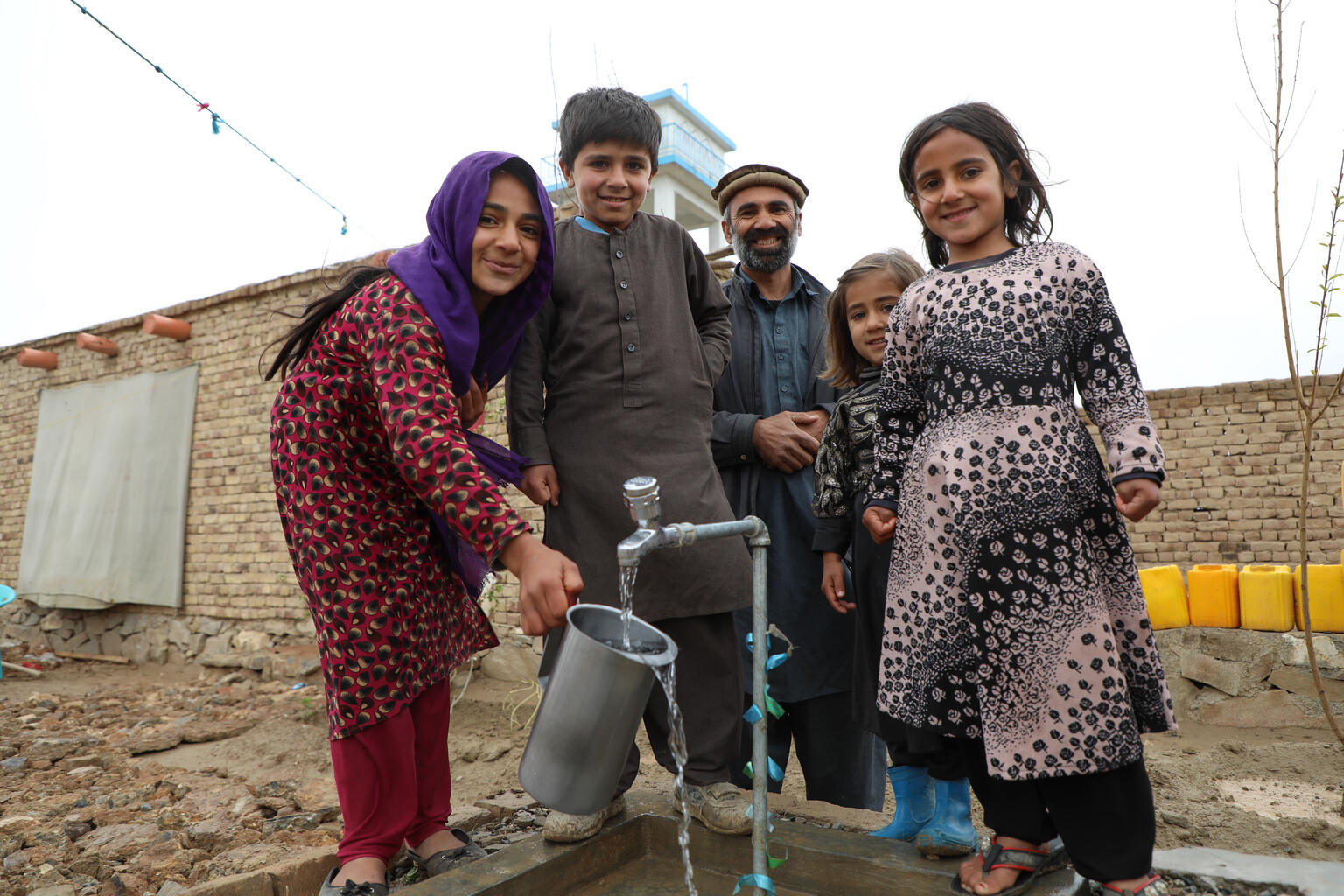WASH – Water, Sanitation and Hygiene
The health and socio-economic benefits of safely managed water can only be fully realized alongside safely managed sanitation and good hygiene practices. Without water, sanitation and hygiene (WASH), people’s wellbeing, dignity and opportunities are severely compromised, particularly women and girls’.
Access to water and sanitation are human rights. Hygiene knowledge and facilities are life-saving, highly cost-effective health interventions. Governments must take a rights-based, integrated approach to expanding access to these vital services.

The issue explained
Billions have no access to WASH. Enormous numbers of people, the vast majority in low income countries, have no access to safely managed water and sanitation, or to handwashing facilities with soap or alcohol-based rub. Refugees and migrants often spend long periods without access.
Inadequate WASH is a major killer. Inadequate WASH devastates public health. The infectious diseases that spread through unsafe water, from improperly disposed human waste and poor hygiene practices have a profound effect on high rates of infant mortality, malnutrition and chronic illness in the general population.
Water fetching is women’s work. For many communities without safely managed water, sources are usually far from their homes, and it typically falls to women and girls to spend much of their time and energy fetching water, a task which often exposes them to abuse and attack.
Poor sanitation and hygiene endangers women and girls. Going to the toilet outside, or in facilities shared with men, puts women and girls in danger. Lack of good hygiene knowledge or facilities prevents effective menstrual hygiene management (MHM) and can lead to serious health problems.
Lack of WASH perpetuates inequality. Women, girls, older people and disabled people are precluded from full participation in public spaces, workplaces and education by inadequate or non-existent WASH facilities.

The way forward
WASH is critical to the Sustainable Development Goals (SDGs). Safely managed water and sanitation services and adequate and equitable hygiene for all will drive progress across the 2030 Agenda, particularly in health, gender equality and livelihoods.
WASH is a defence against COVID-19. Governments must address the lack of WASH in healthcare facilities to help control the spread of infectious diseases such as COVID-19, cholera and typhoid, and provide a safe environment for staff and patients.
WASH must be central to climate adaptation plans. Governments must ensure that water and sanitation services and hygiene behaviours and facilities can withstand and be sustained during and after climate-related disasters, helping to protect public health in an uncertain future.
WASH can drive economic growth. Investment in WASH generates positive returns in reduced medical burden and increased productivity, removes barriers to marginalized groups’ participation in society, and creates long-term jobs.
Facts and Figures
- 2.2 billion still live without safely managed drinking water, including 115 million people who drink surface water. (WHO/UNICEF, 2023)
- 3.5 billion people still live without safely managed sanitation, including 419 million who practise open defecation. (WHO/UNICEF, 2023)
- Unsafe water, sanitation and hygiene are responsible for the deaths of around 1,000 children under 5 every day. (WHO, 2023)
- 2 billion still lack basic hygiene services, including 653 million with no facility at all. (WHO/UNICEF, 2023)
- Globally, in health care facilities in 2023, 742 million people (9% of the global population) had no water service, 660 million (8% of the global population) had no sanitation service, and 722 million people (9% of the global population) had no hygiene service. (WHO/UNICEF, 2023)
- The 1.9 billion people living in fragile contexts are twice as likely to lack safely managed drinking water and basic hygiene and 1.5 times as likely to lack safely managed sanitation services. (WHO/UNICEF, 2023)
- To achieve SDG 6 – water and sanitation for all by 2030 – will require a six-fold increase in current global rates of progress on drinking water, a five-fold increase for sanitation, and a three-fold increase for hygiene. (WHO/UNICEF, 2023)
- At the current rates of progress, 3 billion people will still be living without safe toilets, 2 billion without safe drinking water, and 1.4 billion without basic hygiene services in 2030. (WHO/UNICEF, 2023)
- Today, 1 in 5 children (447 million) still lack basic drinking water services at their school, 1 in 5 lack basic sanitation services (427 million), and 1 in 3 children (646 million) lack basic hygiene services. (WHO/UNICEF, 2024)
- Approximately 50 litres of water per person per day are needed to ensure that most basic needs are met while keeping public health risks at a low level. (WHO, 2017)
- 207 million people spend over 30 minutes per round trip to collect water from an improved source. (WHO/UNICEF, 2019)
- Globally, at least 2 billion people use a drinking water source contaminated with faeces. (WHO, 2019)
- Under-fives living in countries experiencing protracted conflict are 20 times more likely to die from causes linked to unsafe water and sanitation than from direct violence. (UNICEF, 2019)
- 1 million deaths each year are associated with unclean births. Infections account for 26% of neonatal deaths and 11% of maternal mortality. (WHO/UNICEF, 2019)
- Hygiene promotion is the most cost-effective health intervention. (World Bank, 2016)
- Loss of productivity to water- and sanitation-related diseases costs many countries up to 5% of GDP. (WHO, 2012)
- Universal access to safe drinking water and adequate sanitation and hygiene would reduce the global disease burden by 10%. (WHO, 2012)
- Investment in water and sanitation services generates a quantifiable, positive return on investment through saved medical costs and increased productivity (Hutton et al. 2015):
- Urban basic drinking water: $3 return for every $1 invested.
- Urban basic sanitation: $2.5 to $1
- Rural basic drinking water: $7 to $1
- Rural basic sanitation: $5 to $1
